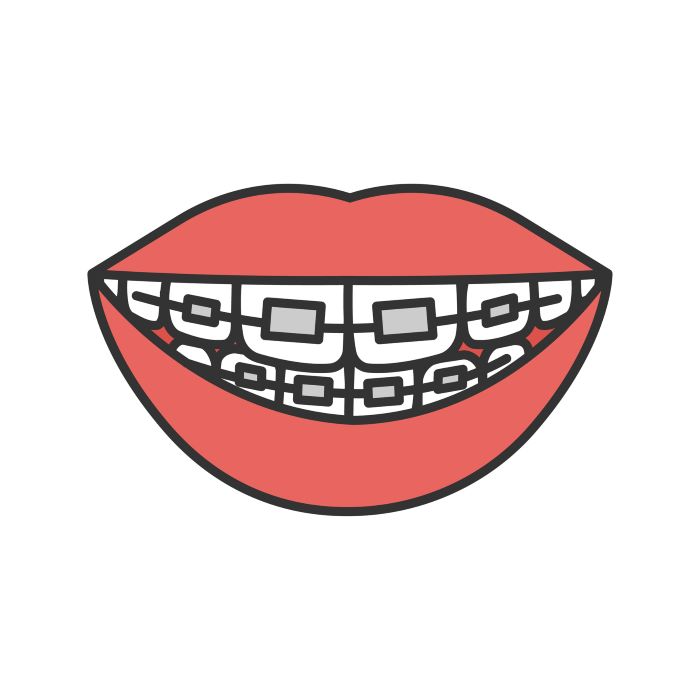Orthodontic Treatments

There are all different types of orthodontic treatment available for patients with crooked teeth, improperly spaced teeth, and additional oral health challenges. However, the average person is aware of the field of orthodontics yet does not understand there are significant differences in orthodontic treatments and procedures. The overarching aim of each of these unique treatment types is to improve oral aesthetics and functionality to promote healthy teeth and gums. However, the treatments significantly vary from one another. Let’s take a quick look at the different types of orthodontic treatments to give patients a better understanding of what this field is really all about.
Comprehensive Orthodontic Treatment
This type of treatment is performed when the permanent teeth are in the mouth. In general, comprehensive orthodontic treatment typically occurs around the age of 12. However, some patients are provided with this type of orthodontic treatment at an earlier age. The overarching aim is to ensure the teeth are aligned to prevent crooked teeth, crowding, and an incorrect bite.
Aside from potentially ruining the smile aesthetic, misaligned and crooked teeth also make tooth and gum care performed at home that much more challenging. If crooked teeth and crowding are not addressed in a timely manner, there is a chance the patient will suffer through additional cavities, gum disease, plaque, and potentially worse issues down the line.
Comprehensive orthodontic treatment typically involves clear ceramic braces or translucent aligners such as Invisalign. However, some patients still prefer the use of conventional metal braces. If necessary, more extensive treatment will be provided. In such instances, orthodontic appliances such as bite correctors and expanders will be used. If absolutely necessary, jaw surgery will be performed to correct the patient’s bite. Jaw surgery also helps achieve the desired facial aesthetic to boot.
Interceptive Orthodontic Treatment
Interceptive orthodontic treatment is typically provided for kids between the ages of seven and eleven as this is the age when younger patients usually still have a combination of permanent teeth and baby teeth. The aim of interceptive orthodontic treatment is to identify issues as early as possible and remedy them before they cause additional oral health problems down the line. Timely action through interceptive orthodontic treatment can prevent all sorts of complicated problems ranging from jaw joint pain to jaw misalignment, malocclusion, impacted teeth, occlusion, crossbites, and more. If timely treatment is not provided, there is the potential for the teeth to endure premature wear and extensive destruction along the gums including the bone that support teeth.
Interceptive orthodontic treatment takes the form of braces along with retainers and expanders that expand the upper jaw to remedy issues such as crossbites. However, time is of the essence. Ideally, the orthodontist will take action while the patient is young to ensure the permanent teeth move into the mouth exactly as desired, ultimately preventing issues for teeth that erupt as time progresses. Prompt or even early orthodontic treatment has the potential to prove quite effective in certain patients as they have growth potential that has not yet been realized. It is interesting to note certain orthodontic problems become that much more challenging to address throughout the aging process as the bones in the face and the jaw gradually mature.
Braces and Invisalign
Braces are by far the most common orthodontic treatment option. Conventional metal braces are available for use. However, some patients prefer a teeth-straightening solution that is easier on the eyes. Clear ceramic braces along with translucent Invisalign aligners are available to straighten the teeth without making patients feel self-conscious about how they look. So if you don’t want to deal with metal braces including their somewhat annoying wires, brackets, and rubber bands, consider Invisalign clear aligners to correct your improperly spaced or crooked teeth. Unless another person is within an inch or two of your teeth, he or she will not be able to tell you are using aligners.
Aside from ensuring no one knows you are using aligners to straighten your teeth, you will also love Invisalign as you can easily remove these trays to eat, brush your teeth and floss your teeth. There is no need to fuss around with certain dietary restrictions, wires, bands, brackets, and other subtleties as is necessary with traditional braces. Add in the fact that using Invisalign clear aligners reduces the number of appointments at the orthodontist’s office, and you have all the more reason to consider this visually pleasing approach to straightening teeth.
Headgear and Additional Treatment
Though headgear is not an orthodontic appliance, it is used in unison with orthodontic appliances. In most cases, orthodontic headgear is worn at night to correct the back teeth that are out of position or ensure they remain in position as the front teeth are treated. The only caveat to using headgear for orthodontic purposes is patients cannot eat or drink while wearing it.
Additional forms of treatment for orthodontic challenges include lingual braces that connect to the back parts of the teeth, functional appliances that treat issues with the upper/lower jaw, and teeth positioning and retainers. Functional appliances are worn throughout the day and night. As long as the patient sticks to the instructions provided by the dentist in regard to when and how to wear this appliance, it will improve tooth beauty and health. However, orthodontic functional appliances can be removed while eating and also for teeth cleaning.
Retainers are typically used toward the end of the orthodontic treatment course. Retainers hold straight teeth in position as the adjacent gum bone gradually adjusting to the new position. Retainers are available in both fixed and removable forms.
Schedule Your Appointment with OMG Smiles
If you need a Waterbury orthodontist, contact us. Our team of orthodontic specialists is here to help you enjoy optimal oral health and beauty. Dial (508) 348-7178 to schedule an appointment. Dr. Amy Buchler is excited to hear from you!





Please login to publish a comment.
Comments (0)